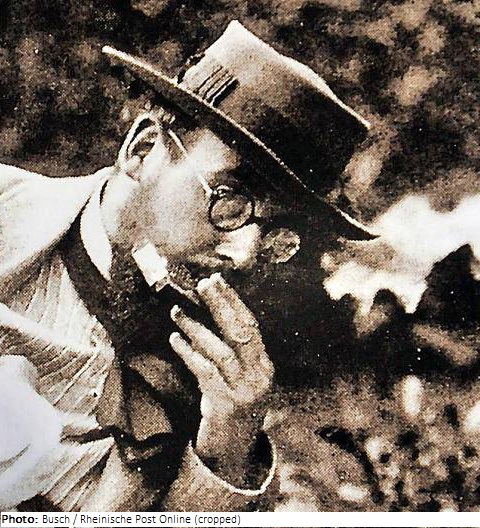Heinrich Nauen

Biographical information
| Roles | Referee |
|---|---|
| Sex | Male |
| Full name | Franz Heinrich•Nauen |
| Used name | Heinrich•Nauen |
| Born | 1 June 1880 in Krefeld, Nordrhein-Westfalen (GER) |
| Died | 26 November 1940 in Kalkar, Nordrhein-Westfalen (GER) |
| NOC |  Germany Germany |
Biography
The painter, draftsman, graphic artist, and art teacher Heinrich Nauen grew up as the son of a baker in Krefeld and decided as a teenager to become a painter. He received his first training in 1896 from a local painter. Against his parent’s wishes, he attended the Düsseldorf Art Academy in 1897 but dropped out after two years. He continued his training in Munich at the private painting school of Heinrich Knirr (1862-1944). In 1900, he transferred to the Academy of Fine Arts in Stuttgart, where he graduated in 1902 as a master’s student of Leopold von Kalckreuth (1855-1928).
In 1902, Nauen became a member of the Latemse School artists’ colony in Sint Martens near Gent. After marrying the painter Marie von Malachowski (1880-1943) and spending several months in Paris, where he attended the Académie Julian and intensively studied Impressionism and the paintings of Vincent van Gogh (1853-1890), he settled in Berlin in 1906.
Nauen became a member of the Berlin Secession (1907) and was active on the board of the Deutscher Künstlerbund (Association of German Artists), but also repeatedly spent several months in his studio in Orbroich near Krefeld. In 1911, he finally returned to the Lower Rhine, where he settled in Schloss Dilborn near Brüggen. Commissioned by the art collector Edwin Suermondt (1883-1923), Nauen painted a cycle of six monumental murals for his residence at Burg Drove in 1912-13. In 1913, the artist participated in the programmatic “Exhibition of Rhenish Expressionists”. 1915-18 he participated in World War I, initially as a soldier, later as a war painter.
In 1921 Nauen was appointed professor of painting at the Düsseldorf Art Academy, where he taught until 1937 when he was dismissed under Nazi pressure and retired in 1939. His works were removed from German museums and were also shown in the “Degenerate Art” exhibition in 1937. Over one hundred of his paintings were confiscated. He spent the last years of his life in Neuss from 1931, then in reclusiveness in Kalkar from 1938.
The central theme of Nauen’s paintings, drawings, and graphic works was the depiction of landscapes, of fields, meadows, gardens, and forests. Initially still working in the tradition of naturalistic plein-air painting, his encounter with French Impressionism and the works of van Gogh provided him with a decisive impulse. Around 1910, his style changed to color-intensive compositions, in which the use of strong color became the essential means of design and expression. In addition to his involvement with Fauvism, there were also moderate echoes of Cubism around 1913/15. It was not until the 1920s that a more realistic conception of muted colors prevailed again. Nauen also designed stage sets and graphic works.
Referee
| Games | Sport (Discipline) / Event | NOC / Team | Phase | Unit | Role | As | |
|---|---|---|---|---|---|---|---|
| 1928 Summer Olympics | Art Competitions |  GER GER |
Heinrich Nauen | ||||
| Painting, Paintings, Open (Olympic) | Final Standings | Judge | |||||
| Painting, Graphic Arts, Open (Olympic) | Final Standings | Judge | |||||
| Painting, Drawings And Water Colors, Open (Olympic) | Final Standings | Judge |